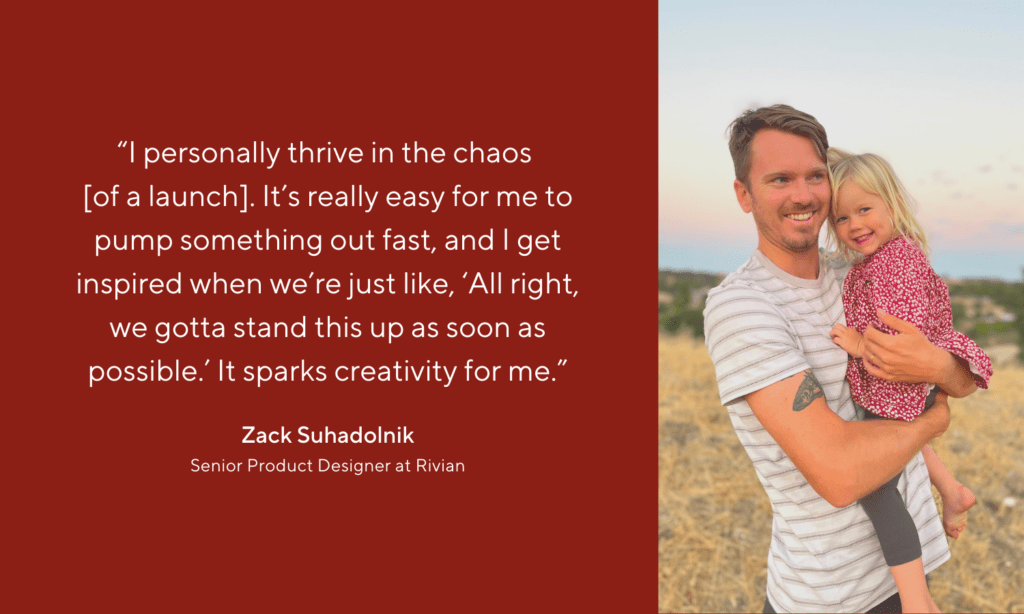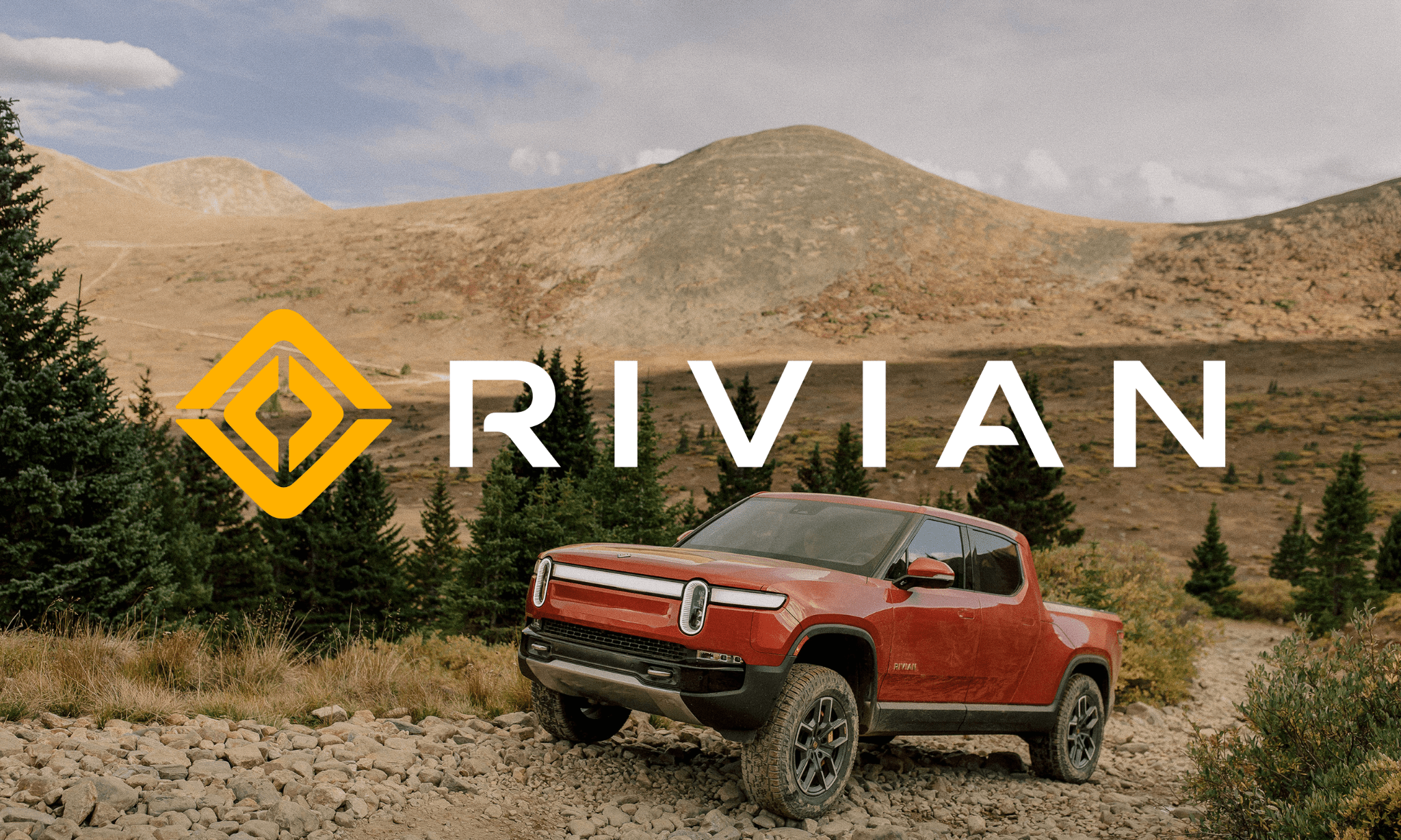Lessons from a Product Launch: Rivian
Ask any product manager, and they will tell you that product launches are equal parts daunting and exciting. “Go, go, go” is the mantra, as all team members kick into high gear to get the first minimum viable product (MVP) out into the world.
Launching a product should be an exciting time for product managers and key stakeholders. However, it is often a daunting task because there are a lot of moving parts throughout the launch process. It includes running customer validation interviews and developing team sprints, communicating updates with internal stakeholders. And so much more!
It’s a lot to manage, both at a macro and a micro-level. Pretty daunting, right?
A successful product launch provides a sense of accomplishment and excitement, despite how chaotic it first appears. That’s the situation Zack Suhadolnik, a Senior Product Designer, found himself in at Rivian—an American electric vehicle automaker and automotive technology company. “It was pretty chaotic; I’d say,” he mused. It is completely understandable, considering Rivian was simultaneously going to market with the first-ever EV truck, gearing up for their IPO, and grounding its new brand.
Zack was gracious enough to sit down with us to share his first-hand experience with Rivian’s R1T electric truck launch. We came away from the discussion with some fundamental principles that can benefit any product person managing their own respective launches.

View Chaos as an Opportunity
Chaos—it’s a state of being that evokes images of complete disarray and a lack of process. It is a natural byproduct of a product launch of any size. Yet, we should view chaos as an opportunity to create order by streamlining the product launch process.
“I personally thrive in the chaos [of a launch]. It’s really easy for me to pump something out fast, and I get inspired when we’re just like, ‘All right, we gotta stand this up as soon as possible.’ It sparks creativity for me.”
During launches, Zack noted that things need to get done and get done fast. The need for speed sparks and generates inspiration that would not exist otherwise.
“Creativity comes out of those less structured chaotic projects. For designers, the beginning of a project is where it’s the most fun. As soon as a project starts to get very organized and you’re starting to implement things is when I think creativity drops off.”
When Zack joined the team at Rivian, there were some initial structures in place for his team, but also room for creativity. This unique freedom—given to everyone in the organization—was a boon to a designer like him.
“If you look at a lot of other automotive industry companies, their design is all very similar, very templatized. It is clean, and it probably converts really well, but it lacks character and any sort of voice that’s different.”
Stay Open, Come Together
Complete freedom and collaboration did not just happen organically at Rivian. It’s their core principle, embodied in the mission statement, “Stay open, come together.”
At all levels of the company, there is a shared vulnerability that encourages employees to reiterate on ideas to make them better. Coworkers have a pride-driven “fight” instinct to redo initial versions of products. The company firmly believes everyone should have pride in their work.
While collaboration is encouraged at every company, during Rivian’s launch, they took it a step further. Zack references the “storming” phase of Tuchman’s stages of group development to describe research and ideation at Rivian. During this phase, leadership and individual teams leverage as many creatives as possible to solve a problem, produce the best ideas, and prioritize the right items.
“It’s really hard for some people to accept this strategy, and I think it takes a certain personality type to thrive in that sort of ambiguity and uncertainty. But you get to make sure that everything’s on the table, and then you can start to narrow in on what’s feeling right.”
Zack admits that this is a unique approach to Rivian, not in execution but the executive buy-in. They allow teams to bring in people early and often at the beginning of ideation and even intentionally cross-pollinate teams on the creative side. As a result, the process allows each team a broader view of their options and opportunities and keeps fresh perspectives at the forefront of their projects.
Collaboration Doesn’t End with the Launch
What happens after the product gets launched? At Rivian, they pump the brakes. Then, each team carefully works in a cross-functional way to smooth out any leftover rough edges from the launch.
“For me personally, it’s been a very new way of working. I’ve always been so used to just owning everything. So to be vulnerable and open up has been hard, but I think it really leads to better design in the long run.”
Groups that got siloed came together to foster further collaboration. Their goal is to move forward and align on what worked and what did not retroactively.
3 Key Takeaways from Rivian’s Product Launch Experience
Rivian’s product launch has several key takeaways from a product perspective:
1. Embrace the chaos of the launch, and use it to your team’s advantage.
Tap into that mix of creativity and independence to get a bird’s eye view of the problem at hand, ensuring that you have a higher chance of executing the right decision.
2. Collaborate with anyone and everyone at the early stages of a launch.
Early collaboration ensures that you have good coverage on all ideas for your side of the product. Additionally, it ensures you plant the seeds of cross-functional teamwork to deal with possible siloes later in the launch. Executive buy-in can be another way to ensure the success of this collaboration.
3. Conduct a retrospective and reach out to siloed teams post-launch.
The retrospective process allows your team the opportunity to align with others from a process perspective and take stock of what worked and what didn’t during the launch.
No product launch will turn out perfectly, but there are important learnings to be had from each launch, even those outside of a traditional software product launch. Take these findings and apply them to your next major launch!
P.S. Have a great product launch story to share? We’d love to hear it! Send a brief overview of your product launch tale to content_team@productplan.com, and we’ll be in touch.



